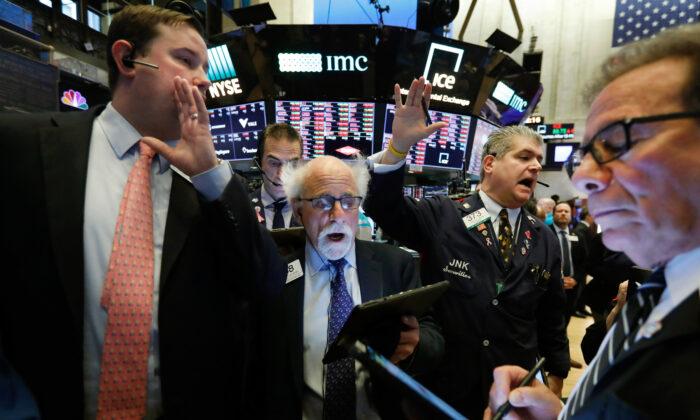Stocks on the S&P 500 and the Dow closed down on Dec, 30, after giving up its early gains late in the trading session breaking what could have been its longest streak of gains since March.
The market initially rallied after weekly jobless claims fell more than expected, calming fears of the Omicron variant’s effect on the U.S. economy.
The Dow Jones Industrial Average (.DJI) retreated from a fresh high, ending its six-day winning streak, falling -0.25 percent, or -90.55 points, at 36,398.08, the S&P (.SPX) down -0.30 percent, or -14.33 points, at 4,778.73, and the Nasdaq (.IXIC) down -0.38 percent, or -61.91 points, ending at 16,429.10.
The four-week moving average of initial claims, which is often seen by analysts as an indicator of broader labor market trends, fell to their lowest level since 1969.
The lower number of weekly jobless filings is also a fresh sign of a tightening American job market.The weekly rolling average of new cases has jumped 60 percent from the previous week to about 240,000, according to the CDC on Dec. 29.
Investors are already preparing for the first quarter of 2022, when the Federal Reserve is expected to hike U.S. interest rates in the face of rising inflation, global supply chain problems, and the upcoming mid-term elections.
The financial markets are currently in a “Santa Claus Rally” season, a historically strong trading period that typically occurs in the last five trading days of the year into the first two days of the new year.The stock markets will have another round to finish the year on a high note, when Wall Street opens on New Year’s Eve, despite it being a federal holiday.
The bond market will close early, at 2 p.m., EST.
The Wall Street indexes are looking to exit 2021 on a positive note with their sharpest three-year surge since 1999.





